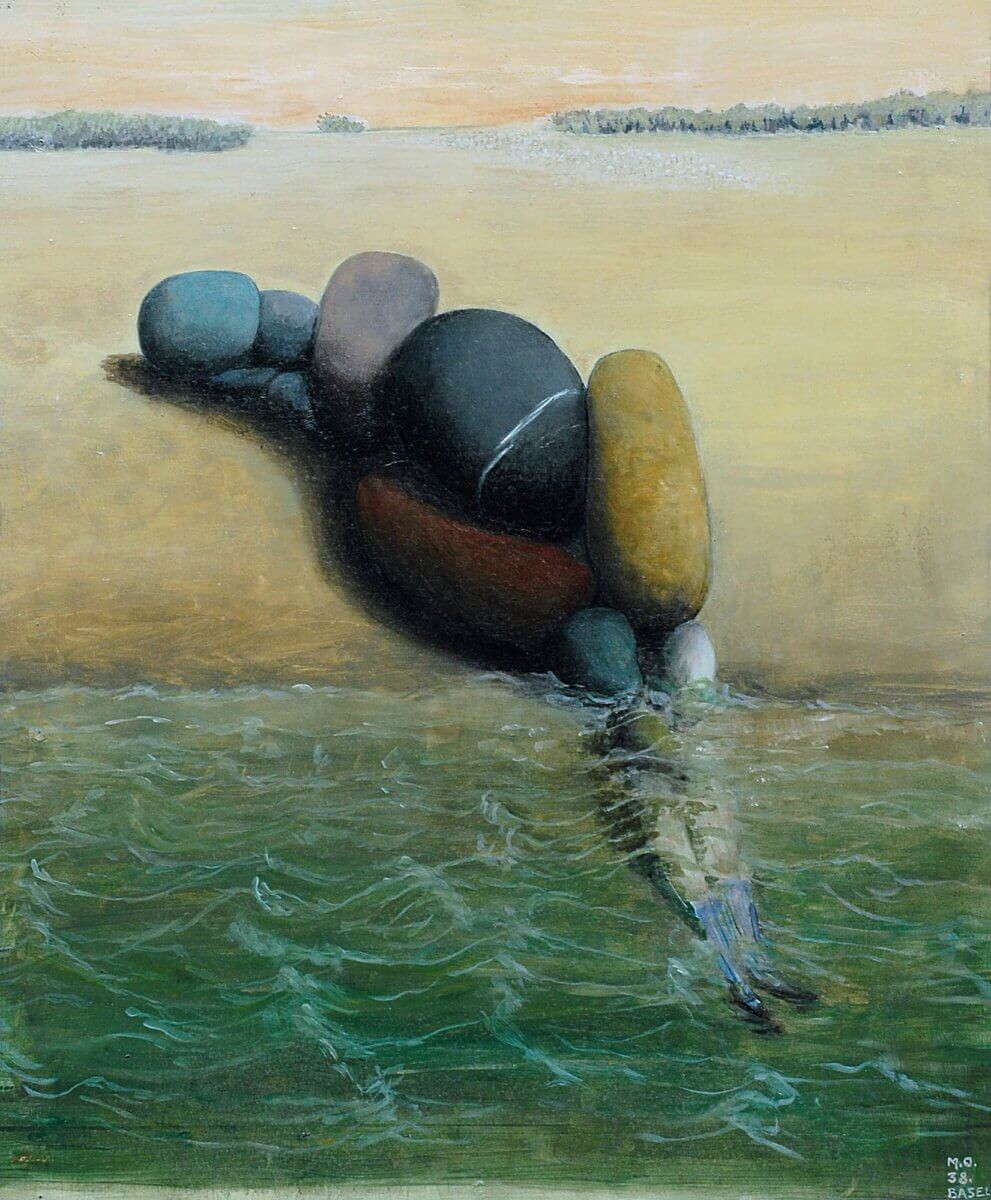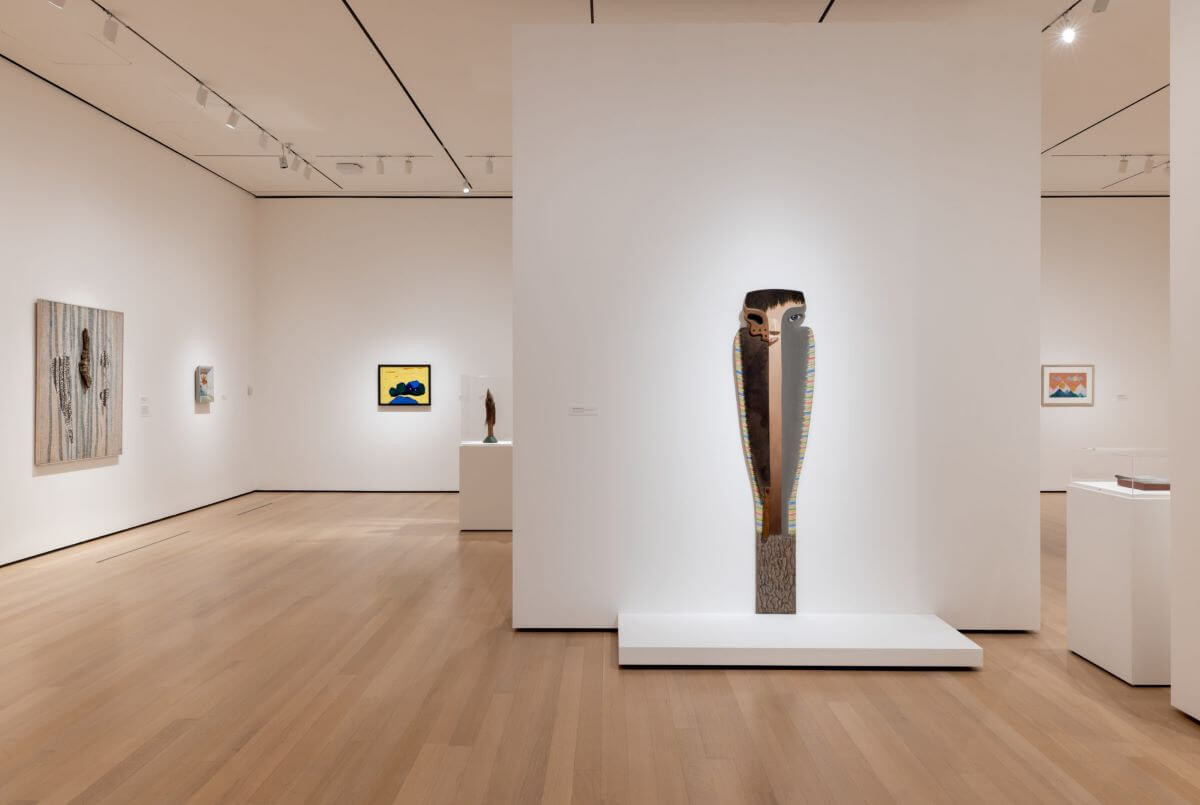During the holiday season, art museums offer a unique retreat, and this year, the Meret Oppenheim retrospective at the Museum of Modern Art became my destination. Oppenheim, a Swiss artist who joined the Surrealist movement in Paris in 1931, is perhaps best known for her 1936 piece, Object. This work, a fur-covered teacup, saucer, and spoon, is undeniably one of the most Strange Gifts you could encounter in an art museum, and it was this piece that initially drew me to the exhibit.
The anecdote surrounding Object is almost as peculiar as the artwork itself. Apparently, a casual coffee conversation with Pablo Picasso led to its inception. Picasso, admiring Oppenheim’s fur bracelet, suggested that one could cover anything in fur. Oppenheim, taking this as a challenge, transformed ordinary tableware into something utterly bizarre.
 Meret Oppenheim Object 1936 fur covered cup saucer and spoon unsettling surrealist art MoMA
Meret Oppenheim Object 1936 fur covered cup saucer and spoon unsettling surrealist art MoMA
Seeing Object in person was a visceral experience, far more impactful than simply viewing images. The unsettling nature of the piece was almost overwhelming. Writing about it now, I can still recall the feeling of unease it provoked. The fur on a teacup is inherently repellent, a clash of textures and functions that disrupts our sense of normalcy. Adding to this discomfort, Oppenheim didn’t merely apply fur smoothly; she “tufted” it, emphasizing its furriness and making the material’s presence unavoidable, amplifying the strange gift she presented to the viewer.
The exhibition, aptly titled My Exhibition, revealed the breadth of Oppenheim’s creativity beyond Object. It encompassed a diverse range of works, from dreamlike landscapes like Castle by the Sea to darkly whimsical paintings such as Corpse in a Boat and Three Murderers in the Woods. One particularly witty piece, Schoolgirl’s Notebook, created during her teenage years, cleverly satirized math lessons. It features a typical algebra equation next to a rabbit outline, with the solution playfully declared as “x = the now-drawn-in rabbit,” a testament to her early embrace of surrealist humor and strange gifts of perspective.
 Meret Oppenheim Stone Woman 1938 painting stones arranged woman figure beach surrealist art MoMA
Meret Oppenheim Stone Woman 1938 painting stones arranged woman figure beach surrealist art MoMA
Another piece that captured my attention was Stone Woman. This small painting depicts stones arranged to resemble a reclining female figure on a beach. There’s an unexpected beauty in the arrangement, the curves suggesting a ballerina resting by the sea. However, the longer I observed Stone Woman, the more it resisted simple interpretation. While I wanted to see an abstract representation of a graceful woman, the stones remained resolutely stones. Upon closer inspection, I noticed her legs, extending into the sea, weren’t stone at all, but disturbingly realistic human legs. This unsettling detail highlights the strange gifts Oppenheim offers, challenging our perceptions and leaving us questioning what we are truly seeing.
This sense of rupture and reinterpretation permeated the entire exhibition. Squirrel, a companion piece to Object, features a beer stein adorned with a bushy squirrel’s tail, again creating a sense of revulsion through unexpected combinations. Octopus’s Garden, a collage evoking an undersea scene with vibrant blues and greens and delicate white coral, initially appears inviting. Yet, the inclusion of peacock feathers amongst the coral introduces a jarring element, an intentional anomaly that disrupts the idyllic scene and prevents the viewer from simply enjoying its beauty. These strange gifts of dissonance are central to Oppenheim’s artistic approach.
Perhaps the most profoundly unsettling piece, aside from Object, was Octavia. This nearly life-sized sculpture, standing alone in the exhibit, initially resembles a child. Its form is constructed from two wood saws, one still attached, the other removed, with an eye peering from the vacant handle space and a protruding “tongue.”
However, closer inspection reveals the “tongue” to be a finger. This sudden, visceral shift is horrifying, turning familiarity on its head. Trying to rationalize this unsettling feeling, I considered an interpretive lens: transformation. Perhaps Octavia represents the tumultuous process of shedding one identity for another, a potent mythological symbol. Yet, the piece evokes a sense of entrapment, as if the emerging self is somehow consumed or lost in the process. These strange gifts of unsettling imagery force us to confront uncomfortable truths about change and identity.
 Installation view Meret Oppenheim My Exhibition MoMA Jonathan Muzikar
Installation view Meret Oppenheim My Exhibition MoMA Jonathan Muzikar
One might question the desire to experience such unsettling art. MoMA offers diverse exhibits, including even interactive video game art. Why subject oneself to the queasiness induced by a hairy teacup? For me, engaging with art, even when disturbing, mirrors a form of profound reflection, much like prayer. Childhood often presents prayer as a prescriptive act – specific words, stated desires. However, adult prayer, for me, is less about articulation and more about connection. Simply listing needs feels akin to daily anxieties, rarely offering solace.
True prayer, like engaging with Oppenheim’s strange gifts, is about surrendering personal agendas and connecting with something larger. In prayer, I seek quiet presence, observing my internal and external worlds. Sometimes, the mind races, or boredom ensues. Other times, quietude nourishes, leading to unexpected insights.
Similarly, at an art exhibit, I aim not to “solve” the art or exhaustively view every piece. Instead, I seek to feel, to connect, to be moved. When a piece resonates, I linger, release expectations, and observe what unfolds. Oppenheim’s work, while provoking unease, is also strangely exhilarating. How does she achieve such a reaction? Why is a squirrel-tailed beer stein so repulsive? And what deeper meaning, if any, do these strange gifts convey?
Growing up in the late 1980s, Surrealism had become somewhat diluted, reduced to dorm room posters of melting clocks. Oppenheim’s exhibition revives the raw power and intent of the movement. Surrealists aimed to fundamentally disrupt our sense of stability. Like the radical teachings often associated with the holiday season, they broke conventions to expose those conventions, hoping to foster clearer perspectives and better choices. “Freedom is not given to you,” Oppenheim famously stated. “You have to take it.”
Perhaps my holiday museum visits are a form of Advent in themselves. We anticipate, we are surprised, and occasionally, we receive truly strange, yet profoundly insightful gifts.
